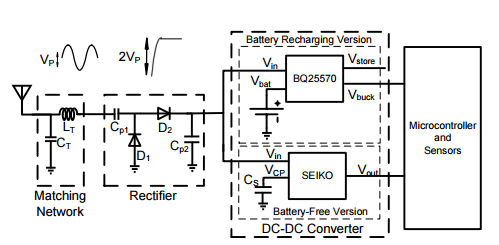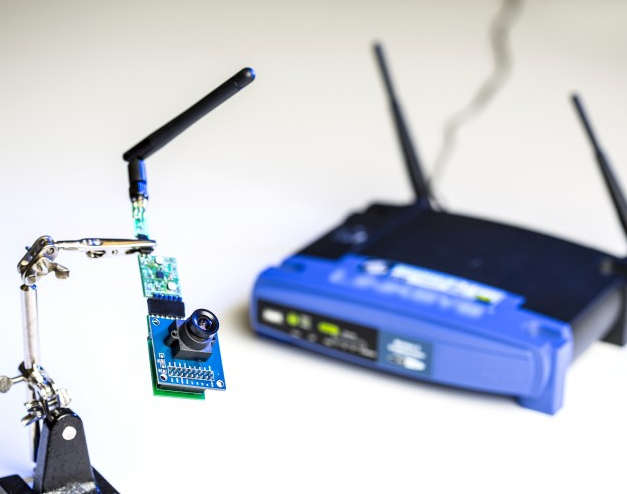| Power Over WiFi - Really Wireless |
| Written by Harry Fairhead | |||
| Saturday, 21 November 2015 | |||
|
This sounds at first like a crazy idea, but it does seem to be possible to create completely wireless devices by sucking up the radio frequency power that now permeates almost every environment. Meet PoWiFi. It seems that this development is obvious enough a game changer for Popular Science to include it in its list of "Best of What's New 2015" awards so we really should take notice. If you have ever tried to set up anything from a WiFi surveillance camera to a temperature monitoring device you will know the frustration of being able to connect it to the network wirelessly only to have to seek out a source of hard wired power. Of course you could use batteries or solar but these have problems of there own like running out of juice and being inside and far away from the sun. Vamsi Talla and a team at the University of Washington in Seattle have been working on a way of allowing the harvesting of WiFi signals to power devices - Power Over WiFI or PoWiFi. Their device will generate the 1.8 to 2.4V needed to power microcontrollers. The big problem to overcome is the fact that when the network is not transmitting, the power harvested by the device can be less than that necessary to keep the voltage up. The problem is made worse by the need to use a DC-DC converter chip which has a minimum working voltage - 300mV in this case. In tests the sporadic WiFi signal always failed to reach the 300mV threshold and so no useful power was generated.
The solution to this problem is to insert the occasional "power packet" into the transmission. Three non-overlapping channels are used to send a 1500 byte UDP packets. The software checks to make sure that the channel isn't busy so as not to reduce the throughput. The software also can use knowledge of what it is feeding to time the power packets. For example, if the device is a sensor recording data only every minute then the packets can be scheduled so that the device if charged only when it needs to be. Also notice that the harvester collects power from across multiple WiFi channels. Two types of device were tested - one with a battery to charge and one that simply supplied power. They tried out both powering a temperature sensor and both worked well but the battery-based device worked at a greater distance from the router - 28 feet rather than 20 feet. If a temperature sensor doesn't sound exciting enough they also tried a greyscale camera. In this case things are more complicated. The power delivery was only enough for a picture every 30 mins or so - not really enough for surveillance. However, add a motion detector and this becomes useful. Finally the team charged a Jawbone UP24 from no-charge to 41% charge in 2.5 hours.
The devices were also tried out in six unmodified homes and they discovered that it worked without significantly degrading the WiFi network and adjacent networks. Where does this leave us? Clearly there is more that can be done to improve the system, but what has already been demonstrated is that WiFi can be used as a charging hotspot for low power devices and for the continuous powering of remote sensors. This opens up low-cost truly wire-free monitoring and data collection. It could be just what the IoT needs to make it attractive. For example, you could add temperature measurement to each room in a house linked to the heating without having to install any new wiring.
More InformationPowering the Next Billion Devices with Wi-Fi Related ArticlesIntel Launches Curie-Based Arduino 101
To be informed about new articles on I Programmer, sign up for our weekly newsletter, subscribe to the RSS feed and follow us on, Twitter, Facebook, Google+ or Linkedin.
Comments
or email your comment to: comments@i-programmer.info |
|||
| Last Updated ( Saturday, 21 November 2015 ) |




